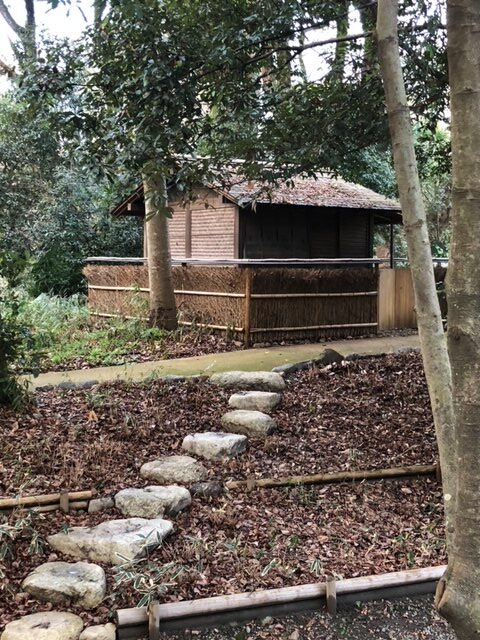
Regular readers of this blog will know that our local shrine is the World Heritage site of Shimogamo Jinja in Kyoto. Over the more than thirty years I have been living close to it, I have noted the many changes that the shrine has undergone. Most of these have been improvements or additions in order to increase the attraction of the shrine to worshippers, on whose money it depends. It seems to be working. There are far more visitors these days than there used to be. (See this post for previous additions, such as a rugby subshrine. )
There is a big new project in the heart of the Tadasu forest, a remnant it is said of the original wild forest that once covered the whole river basin. A large portion of the woods has been cleared in order to make what looks like walkways and a stone lined pond. In Japanese fashion nature has been modified and beautified.
The entrance to this ‘nature park’ leads through a series of torii to a small shrine named Kosaki no yashiro. Originally it stood in the area between present-day Kyoto University and Tanaka Shrine, indicative of how far Shimogamo’s reach once was, but over the years the Kosaki Shrine suffered damage from fire and was destroyed in the Onin War (1467-77) which devastated Kyoto. In 2014 it was reconstituted here at Shimogamo as part of their shikinen sengu (regular renewal).
However, the highlight of the cleared area is the Hojoki hut of Kamo no Chomei. The author is thought to have lived in this part of the precincts. The model of his famous hermitage has been relocated from the nearby Kawai Jinja, where it stood in the shrine’s compound. Now it has a more atmospheric setting, surrounded by trees and with stone steps leading to it across a stream and up to the hut set on a slight incline. It looks more appropriate, closer to how the original would have been when Chomei lived on a hill outside the capital.
For the moment the Shimogamo clearing is still off-limits, and it is uncertain when it will be open to the public. Something to look out for on your next visit, perhaps, to what is slowly turning into a Shinto theme park.

For further reading about Kamo no Chomei together with pictures of his Hojoki hut, please see here.
For an account of other changes and additions at Shimogamo, see here.
For electronic use by the shrine, click here.
For more about Kawai Jinja next to the site, click here.

Leave a Reply